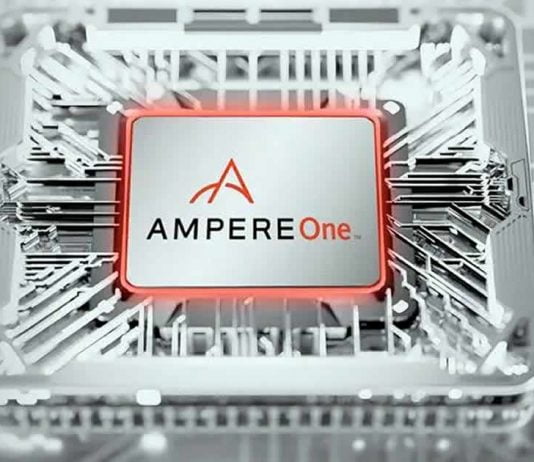Ampere Computing, a leading provider of Arm-based server processors, has announced the introduction of its groundbreaking AmpereOne processor family. This latest offering showcases Ampere’s commitment to pushing the boundaries of performance and power efficiency in data centres.
The AmpereOne family encompasses a range of five SKU variants, offering an impressive core count ranging from 136 to 196 cores. These processors succeeded the previous generation of Altra chips and introduced several advancements. Notably, despite being single-threaded, AmpereOne chips are manufactured using TSMC’s cutting-edge 5nm and 7nm process technology, resulting in a chiplet architecture.
However, Ampere’s chiplet approach distinguishes itself from that of industry giants AMD and Intel. While AMD divides its 96 cores into 12 compute tiles with 8 cores each, connecting them to a single central memory and I/O controller, Ampere takes a contrasting approach. AmpereOne’s 192 cores are integrated onto a single large die, positioned between memory and I/O dies.
This unique approach offers numerous advantages. Firstly, Ampere can potentially achieve improved latencies, enhancing overall performance. Additionally, the chiplet architecture allows for the combination of process technologies. AmpereOne’s compute tiles are manufactured using the advanced 5nm process, while the I/O and memory dies utilize the slightly older 7nm process.
Despite the innovative nature of Ampere’s approach, the concept of heterogeneous process technology is not new. AMD has effectively employed this methodology in its Epyc and Ryzen processors for years.
A closer examination of AmpereOne reveals that these processors not only offer a greater number of cores but also larger cores. Each core features 2MB of private L2 cache, contributing to enhanced performance. Ampere promises significant improvements in areas such as virtualization, mesh congestion management, branch prediction, security, and power management, thanks to the innovative core design.
Furthermore, AmpereOne processors remain fully compatible with the Arm instruction set, providing developers with familiar tools and ensuring seamless integration. However, the ability to design their own cores allows Ampere to ship processors optimized for the specific needs of large cloud platforms. As a result, AmpereOne processors boast numerous cloud-centric features, including support for nested virtualization, confidential computing, memory tagging, and per-tenant memory bandwidth throttling. These features are expected to be highly attractive to cloud providers as they expand their confidential computing offerings.
It is worth noting that, similar to the latest chips from AMD and Intel, the addition of a substantial number of cores comes with increased heat and power requirements. The Ampere One family runs hotter and consumes more power compared to its predecessor, Altra. While Ampere Altra had a power consumption range of 1.25-1.4 watts per core, Ampere One operates at approximately 1.8 watts per core, resulting in a higher power draw of 200-350W per socket.
In terms of memory capabilities, the AmpereOne processors support 8 channels of DDR5 memory, aligning with Intel’s Sapphire Rapids. However, they fall short of the 12-channel DDR5 memory support offered by AMD’s Gen.
